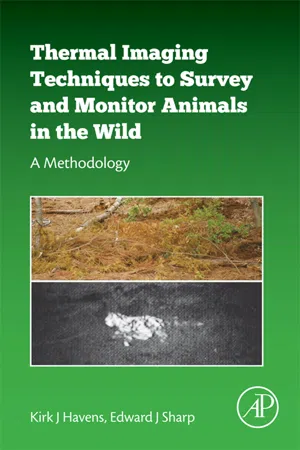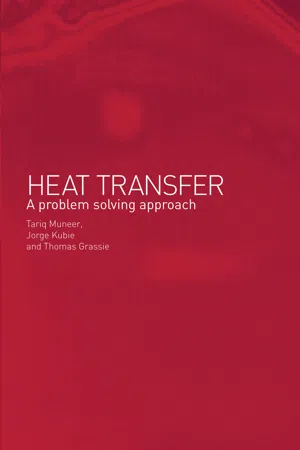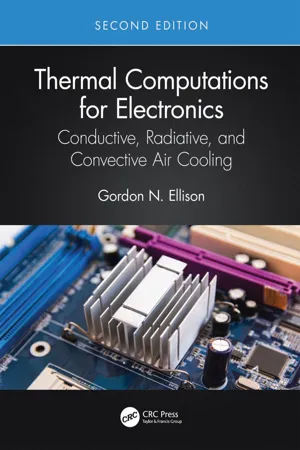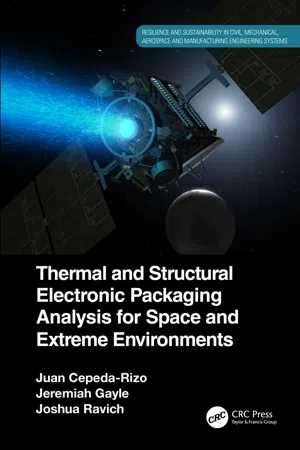Physics
Black Body Radiation
Black body radiation refers to the electromagnetic radiation emitted by a perfect absorber and emitter of radiation, known as a black body. It is characterized by a continuous spectrum of radiation that depends only on the body's temperature. This phenomenon played a crucial role in the development of quantum mechanics and the understanding of the behavior of light.
Written by Perlego with AI-assistance
8 Key excerpts on "Black Body Radiation"
Learn about this page
Index pages curate the most relevant extracts from our library of academic textbooks. They’ve been created using an in-house natural language model (NLM), each adding context and meaning to key research topics.
- eBook - ePub
What Really Causes Global Warming?
Greenhouse Gases or Ozone Depletion?
- Peter Langdon Ward(Author)
- 2015(Publication Date)
- Morgan James Publishing(Publisher)
94 he could make the equation calculate spectral radiance that matched observations not only at low frequency, but also at high frequency. This equation applies to a “black body” at thermal equilibrium. A black body is simply a perfect absorber and emitter of radiation—it absorbs and radiates all frequencies present. It is the color black because none of the incoming radiation is reflected, scattered, or radiated back from it. A non-black body can be thought of as absorbing all radiation except its particular color (for example, green), which it, in effect, reflects, scatters, or radiates back. Thermal equilibrium means that thermal energy (heat) is no longer flowing from one point in the body to another point, except when there is an internal source of heat from which heat moves uniformly outward toward the radiating surface to replace the energy that is being radiated away from it.Figure 4.6 Planck’s law shows that radiation from a warmer body has higher spectral amplitudes of oscillation at all frequencies than does radiation from a cooler body and exhibits its greatest amplitude at a higher frequency, following Wien’s displacement law (black dashed line). Each solid line shows the spectral amplitude radiated from a body at thermal equilibrium for the temperature shown. Note that solar ultraviolet-B (UV-B) radiation (purple dotted line) has much higher energy and much hotter temperature on these log scales than infrared radiation from Earth (green dotted line).Given these conditions, temperature can be defined “as that which is equal [i.e., uniform or homogeneous] when heat ceases to flow between systems in thermal contact.”95 Differences in temperature provide the thermodynamic “slope” down which thermal energy (heat) can flow. Since thermal energy flows via resonance, it can only physically flow from higher amplitude of oscillation to lower amplitude of oscillation at a given frequency. We all know from personal experience that heat only “flows” spontaneously via conduction - eBook - ePub
- Kirk J Havens, Edward J. Sharp(Authors)
- 2015(Publication Date)
- Academic Press(Publisher)
Loudon, 1983 ).Planck’s radiation law gives the spectral radiant emittance, P bb (W/m2 μm), of a perfect blackbody as a function of the wavelength and temperature.P bb( λ , T ) = (c 1/λ 5)[e− 1 ](c 2/ λ T )− 1(5.5)Here, λ (μm) is the wavelength and T (K) is the absolute temperature of the blackbody. The constants, c 1 = 3.741 × 108 W-μm4 /m2 and c 2 = 1.438 × 104 μm-K, are known as the first and second constants of Planck’s law. From this equation we are able to plot the intensity and spectral distribution emitted by a blackbody as a function of absolute temperatures (Figure 5.1 ). We notice several important features about these curves. The value of P bb (λ ,T ) increases as the temperature increases and we see that for very large or very small values of the wavelength that P bb (λ ,T - eBook - ePub
- Clair Wyatt(Author)
- 2012(Publication Date)
- Academic Press(Publisher)
CHAPTER IVBlackbody Radiation
Publisher Summary
This chapter provides an overview of blackbody radiation. All objects that have a temperature at any value other than absolute zero continuously emit and absorb radiation. The radiation characteristics of certain surfaces are completely specified if the temperature is known. These surfaces radiate continuously through the optical spectrum and are known as ideal thermal radiators or blackbodies. Blackbody radiation is described by Planck’s equation. Slide rules are available that provide rapid calculation of blackbody quantities with good accuracy. The Planck radiation formula shows that the spectrum of the radiation shifts toward shorter wavelengths as the temperature of the radiator is increased. The derivative of the Planck equation with respect to wavelength yields the Wien displacement law that gives the wavelength for which maximum radiation occurs for a given temperature. The total power radiated per unit area of a blackbody is obtained by integrating the Planck’s radiation law over all wavelengths. Two well-known approximations to Planck’s law are readily obtained: Rayleigh-Jeans’ law and Wien’s radiation law. The chapter also highlights emissivity, Kirchhoff’s law, and Lambert’s cosine law. Emissivity of a surface is a function of wavelength, temperature, and direction. Lambert’s cosine law signifies that the amount of energy in a given solid angle varies in proportion to the cosine of the angle between the direction in question and the normal to the surface.4-1 INTRODUCTION
All objects that have a temperature at any value other than absolute zero are continuously emitting and absorbing radiation. The radiation characteristics of certain surfaces are completely specified if the temperature is known. These surfaces radiate continuously through the optical spectrum, and are known as “ideal thermal radiators” or “blackbodies” [1 –3 - eBook - ePub
- M.B. Kirkham(Author)
- 2014(Publication Date)
- Academic Press(Publisher)
Shortley and Williams, 1971; p. 326 )P = αP Black= α σT 4.(25.5)Because of this relation, α also is called the emissivity of the surface.25.7 .Spectrum of a Black BodyThe Stefan–Boltzmann law gives the total rate of radiation of a perfect radiator (black body) at absolute temperature T , but gives no information concerning the spectrum of a perfect radiator (Shortley and Williams, 1971; p. 843 ). The spectrum of a perfect radiator is continuous. To discuss the relative amounts of energy in radiation of different wavelengths in the spectrum, we introduce the quantity P λ , which gives the radiated power per unit area in a unit wavelength range at wavelength λ . This quantity, called the spectral radiance, can be determined by means of a spectrometer. What is observed in actuality is the amount of radiant power contained in a short wavelength interval between λ and λ + Δλ . The radiant power per unit area of source, emitted in this wavelength range, is given by P λ Δλ , represented by the shaded area in Figure 25.7 . The unit in which P λ is measured is W/m2 per unit wavelength interval; for example, W/m2 per nanometer.Plots of the distribution of power in the spectrum of a black body at different temperatures are shown by the solid lines in Figure 25.8 . These curves all have two basic similarities in form:1. They do not cross; the curves for higher temperatures are above the curves for lower temperatures at all wavelengths. 2. The maxima of the curves are displaced toward shorter wavelengths as the temperature of the black body is increased. - eBook - ePub
Heat Transfer
A Problem Solving Approach
- Kubie Jorge, Tariq Muneer, Grassie Thomas(Authors)
- 2012(Publication Date)
- Routledge(Publisher)
λ . The relationship between these two properties is as given inwhere c is the speed of light in the medium (in a vacuum c o = 2.988 × 108 m/s).Within the spectrum of electromagnetic radiation, thermal radiation is emitted between approximately 0.1 and 1000µm. This includes a portion of the UV range (0.01–0.4µm), and all of the visible and infrared. All surfaces emit radiation. Both the magnitude of the radiation at a specific wavelength, and its spectral distribution, are dependent on both the temperature, and the properties of the emitting surface. Hence, the rate of thermal radiation heat transfer will also be dependent on these factors. In addition, again depending on the nature of the radiating surface, the surface may emit preferentially in specific directions.9.1.2 Emissivity
Applying the principles of quantum statistical thermodynamics, it is possible to derive an expression for the radiation energy density per unit volume, and per unit wavelength, as,where h is Planck's constant (6.625 × 10−24 J s), and k is Boltzmann's constant (1.38066 × 10−23 J/molecule K).If we integrate over all wavelengths, for all directions, that is, considering a hemisphere as viewed by the surface, the total emitted energy, E b , is found, as given in the Stefan–Boltzmann law below, to be proportional to the absolute temperature to the fourth powerwhere σ , the Stefan–Boltzmann constant, is equal to 5.67 × 10−8 W/m2 K4 , E b is in W/m2 , and T is expressed in Kelvin.The subscript b in Eq. (9.1.3) denotes that this is the radiation from a blackbody . It is referred to as a blackbody as it absorbs all radiation that falls on it, and reflects none. E b is therefore called the emissive power of a blackbody, and the blackbody is therefore an ideal emitter.While the term black is used to define the emissive power of a surface, while a surface may appear black to the eye, it may not necessarily absorb all incident radiation. The converse is also true. For example, while snow and ice appear bright to the eye, they, and many white paints, are effectively black for long wavelength thermal radiation. - eBook - ePub
Thermal Computations for Electronics
Conductive, Radiative, and Convective Air Cooling
- Gordon N. Ellison(Author)
- 2020(Publication Date)
- CRC Press(Publisher)
CHAPTER 10Thermal Radiation Heat Transfer
Thermal energy transport by radiation is unique compared to conduction and convection in that a transport medium is not required. In fact, heat transfer by radiation between two surfaces is greater when there is no intervening material. Fortunately the absorption of radiation between surfaces within many electronic enclosures is such that this absorption can be neglected throughout this text.We had a very brief discussion of radiation heat transfer in Chapter 1 and a couple of application examples in Chapter 8 . In this chapter, we will go into greater detail in order to enhance your understanding of the subject. We will begin with the basics of radiation emission and absorption for both ideal and actual surfaces, followed by a discussion of the geometric aspects of the phenomenon, and two methodologies useful when multiple, i.e., more than two, surfaces are involved. The chapter concludes with a detailed evaluation of radiation from rectangular U-channels simulating plate-fin heat sink radiation.10.1 BLACKBODY RADIATION
Radiation from solid objects such as components, cabinet walls, and heat sinks is a surface-related phenomenon. The radiation is electromagnetic in character with a theoretical basis found in the realm of the quantum physics of solids. Briefly, however, it may be thought of as originating at microscopic electronic oscillators emitting radiation over an extremely broad bandwidth. The maximum monochromatic radiation flux per unit wavelength interval into a half space, or monochromatic emissive power, is described by Planck’s radiation law, Eq. (10.1), and is referred to as blackbody radiation.
whereE=λ bc 1λ 5()e− 1c 2/λT ′Planck ’ s radiation law(10.1) Eλ b[≡ monochromatic emissive powerW /]()m 2⋅ μ mλ[ μ ]= wavelength in microns(1 μ or1 μ)m=10m− 6T ′[ K ]≡ surface temperature = T[+ 273.16° C]c 1≡ first radiation constant - Juan Cepeda-Rizo, Jeremiah Gayle, Joshua Ravich(Authors)
- 2021(Publication Date)
- CRC Press(Publisher)
p given by:(5.4)p =hcv fFigure 5.1 Electromagnetic spectrum.In most solids and liquids, the radiation emitted by one molecule is strongly absorbed by surrounding molecules. Thus, the radiation emitted or absorbed by these liquids or solids involves only a layer of molecules close to the surface; for metals, this layer is a few molecules thick, whereas for nonmetals, it is about a few micrometers thick. For these materials, radiation emission and absorption can be regarded as surface phenomena. On the other hand, in gas mixtures containing species such as water vapor and carbon dioxide, or in a semitransparent solid, the absorption is weak. Radiation leaving the body can originate from anywhere in the body. Emission and absorption of radiation are then volumetric phenomena. Radiation transfer between surfaces through a nonparticipating medium is relatively simple to analyze.Blackbody Radiation
A blackbody emits energy over a broad spectrum of wavelengths. The energy is emitted in all directions from a surface. The intensity (Iλ,b) or “brightness” of the emitted radiation is a function of wavelength λ, but is independent of direction θ and φ. The emissive power of a blackbody obeys Lambert’s cosine law, relating it to intensity [2 ]. T[3 ]he emissive power is a function of direction (Figure 5.2 ):Figure 5.2 The intensity of radiation (Iλ,b ) as a function of wavelength is predicted by Planck’s law.Figure 5.3 Integration of radiation intensity over surrounding hemisphere.(5.5)I=λ b2 hc 0 2λ 5exp− 1h/c 0λ k TIntegration of radiation intensity over a hemisphere surrounding a blackbody surface for the spectral emissive power of a blackbody is shown in Figure 5.3 :Cos θ term is from the projected differential area on a hemisphere and sin θ term is from a differential solid angle:(5.6)E=λ bsin θ d θ d ϕ∫ 02 π∫ 0π 2Icos θλ b- eBook - ePub
- Keith J. Moss(Author)
- 2015(Publication Date)
- Routledge(Publisher)
bλ is constant for the grey surface and arbitrary for the selective surface where it varies at each wavelength. Note also that the absolute temperature of each surface is the same. It is the monochromatic emissive power from each surface which varies with wavelength.Figure 4.4 Variation of black body emissive power with wavelength and absolute temperature.Figure 4.5 Comparison of emission from black, grey and selective surfaces at a fixed temperature T 1 .4.6 Laws of Black Body Radiation
The following laws apply to heat radiation from a perfect radiator: The Stefan–Boltzman constant of proportionality,Thus, heat radiation for sum of the wavelengths I = σ · T 4 W/m2(4.2)Planck’s law shows the relationship between the monochromatic emissive power I at wavelength λ and absolute temperature T , thusSee Figure 4.6 .Stefan–Boltzman law for heat radiation exchange over the sum of the wavelengths at temperature T 1 ,The constants above have the following numerical values:Figure 4.6 A surface element does not radiate energy with equal intensity in all directions,Iφ= ln cos φ .4.7 Laws of grey body radiation
When radiating surfaces remain grey in a system of heat exchange, the emissivities of those surfaces must be accounted for, as well as their geometric configuration. In general, the heat exchange by radiation between two surfaces will depend upon• relative areas of surfaces; • geometry of the surfaces in relation to each other; • the two emissivities.These factors which are quite complex are identified as the form/view factor F 1,2 .The view factor was introduced in 1951 by H.C. Hottell as a means of accounting for the emissivities of the surfaces and their geometric configuration. The CIBSE Guide







